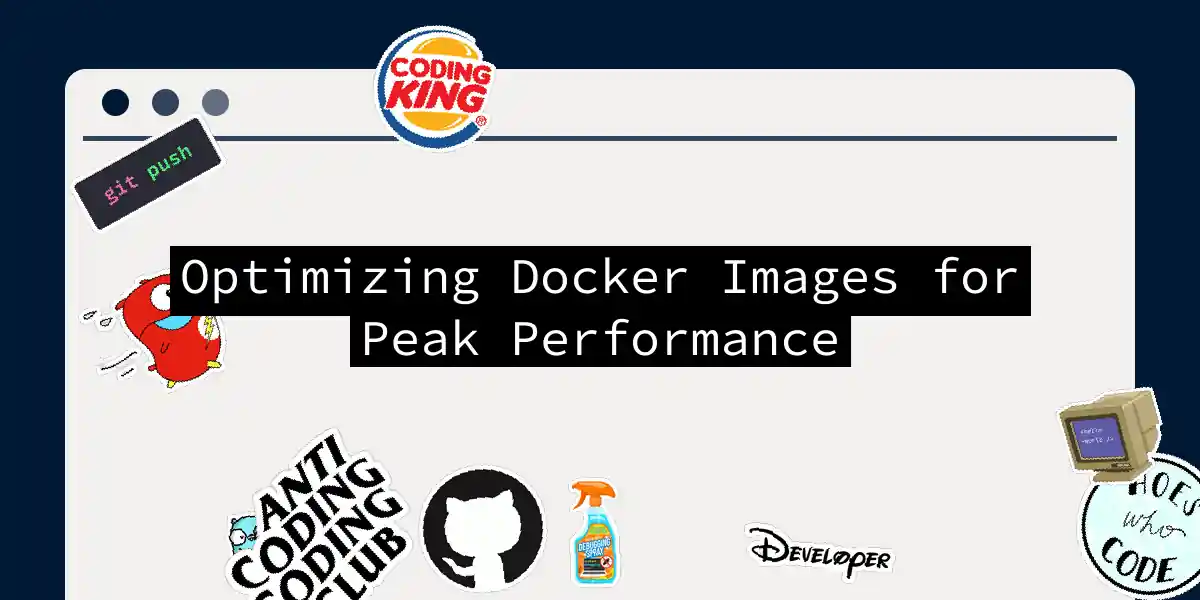The Quest for Speed: Optimizing Docker Images
In the world of software development, speed and efficiency are king. When working with Docker, optimizing your images can make a significant difference in your development workflow, deployment times, and overall system performance. Let’s dive into the nitty-gritty of how to optimize your Docker images and make your containerized applications fly.
Understanding Docker Layers
Before we jump into optimization techniques, it’s crucial to understand how Docker images are built. Each instruction in your Dockerfile creates a new layer in the final image. Here’s a simple example to illustrate this:
FROM ubuntu:latest
RUN apt-get update && apt-get install -y build-essentials
COPY main.c Makefile /src/
WORKDIR /src/
RUN make build
Each command in this Dockerfile translates to a layer in the final image. Here’s a visual representation using Mermaid:
Minimizing Image Size
A smaller image size is crucial for faster push and pull operations, as well as for reducing network bandwidth consumption.
Optimize Your Dockerfile
One of the most effective ways to reduce image size is to optimize your Dockerfile. Here are a few strategies:
Remove Unnecessary Packages and Files: Ensure that you only install what is necessary for your application. For example, instead of using
apt-get install -y build-essentials, specify only the packages you need.RUN apt-get update && apt-get install -y gcc makeUse Multi-Stage Builds: This technique allows you to separate the build environment from the runtime environment, discarding unnecessary build artifacts and resulting in smaller final images.
FROM golang:1.16-buster AS builder WORKDIR /app COPY go.* ./ RUN go mod download COPY *.go ./ RUN go build -o /hello_go_http FROM gcr.io/distroless/base-debian10 WORKDIR / COPY --from=builder /hello_go_http /hello_go_http EXPOSE 8080 ENTRYPOINT ["/hello_go_http"]Here’s how it looks in a Mermaid sequence diagram:
sequenceDiagram participant Builder participant Runtime participant FinalImage Builder->>Builder: Install Dependencies and Build Builder->>Runtime: Copy Only Necessary Files Runtime->>FinalImage: Create Final ImageCombine Commands: Reduce the number of layers by combining commands. For instance, instead of having separate
RUNcommands forapt updateandapt install, combine them into one.RUN apt-get update && apt-get install -y tree
Use Smaller Base Images
Using smaller base images like alpine can significantly reduce the overall size of your Docker image.
FROM alpine:latest
RUN apk add --no-cache gcc make
COPY . /app
WORKDIR /app
RUN make build
Leveraging Docker Build Cache
Docker’s build cache is a powerful feature that can significantly speed up your build process.
Ordering Instructions in Dockerfile
Ensure that frequently changing instructions are placed at the bottom of your Dockerfile, while static instructions are at the top. This allows Docker to effectively use the cache and avoid unnecessary rebuilds.
FROM ubuntu:latest
# Static instructions
COPY static-files /app/
# Frequently changing instructions
COPY dynamic-files /app/
RUN make build
Here’s a Mermaid flowchart to illustrate this:
Network Considerations
Network latency and bandwidth can significantly impact the speed of pushing and pulling Docker images.
Enable ECR Repository Replication
Replicating your ECR repository across multiple regions can reduce network latency by allowing you to use the nearest available endpoint for Docker pushes.
Configure Lifecycle Policies
Implement lifecycle policies to automatically clean up old or unused containers, reducing the size of your repository and improving overall performance.
Parallel Builds and Pushes
Parallelizing your builds and pushes can significantly reduce the overall time required for these operations.
Use Docker’s Parallel Build Feature
Docker allows you to build and push multiple images in parallel using the --parallel flag.
docker build -t my-image --parallel .
Here’s a Mermaid sequence diagram to illustrate parallel builds:
Automate Builds and Pushes
Automate your build and push processes using scripts that can handle multiple images simultaneously. Tools like GNU Parallel can help with parallel execution of commands.
#!/bin/bash
images=(image1 image2 image3)
for image in "${images[@]}"; do
docker build -t $image . &
done
wait
Conclusion
Optimizing Docker images is a multifaceted task that involves understanding Docker layers, leveraging build cache, minimizing image size, and optimizing network operations. By applying these strategies, you can significantly enhance the performance of your containerized applications and streamline your development workflow.
Remember, every byte counts, and every second saved is a step closer to delivering your application faster and more efficiently. Happy optimizing
